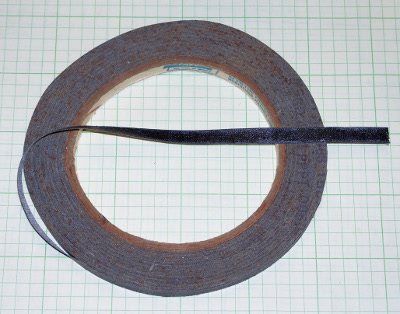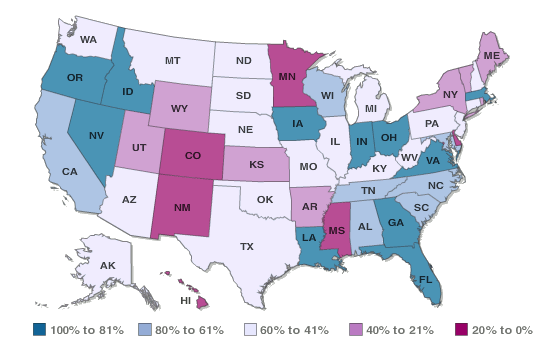K-12 Computer Education
December 8, 2010
Members of
my generation didn't learn computing in grades K-12. The
IBM PC wasn't introduced until 1981, although it was presaged by the
Sphere 1, the
Commodore PET, the
Radio Shack TRS-80 and the
Apple II. I graduated from
high school in 1965. Although I never did any computing in high school, I had a keen interest in computers. One article I remember reading in high school was about
algorithmic poetry composition using a computer at
Bell Labs. One of the first things I did when I finally had my own computer was to write a program of this type (in
assembler). Our high school math club made a field trip to the computer center at
Colgate University. Colgate's computer center had an early
transistorized computer, the
IBM 1401. The 1401 was at the end of its life-cycle at that time, since IBM introduced its System/360 in the mid-1960s. We played
Tic-Tac-Toe and heard some
computer music, as I discussed in a
previous article (Musical Computers, July 6, 2007). The math club also visited an early
integrated circuit fabrication facility of
General Electric. In those days, the ICs were laid out by hand using black tape on transparent film (see figure).

IC layout tape (c. 1965).
The large squares are one inch on a side.
This roll of tape is nearly fifty years old)
Children who are high school seniors today were born around 1995, so they've grown up with computers and have had access to the Internet for their entire lives. You would think that computing would be second nature to them and much of their education revolves around computing. As a recent study points out, there are computers in our schools, but not much computing.[1-2] This report, a collaboration of the
Association for Computing Machinery and the
Computer Science Teachers Association, is entitled, "Running On Empty: The Failure to Teach K-12 Computer Science in the Digital Age."
The problem is that the educational focus is almost exclusively on skill-based aspects of computing; i.e, using a computer with canned software. There is no emphasis on computer science concepts, such as
algorithms.
Programming is not being taught, quite unlike the early days of computing when
Logo was taught to very young grammar school children. To quote from the report,
"... U.S. K-12 education has fallen woefully behind in preparing students with the fundamental computer science knowledge and skills they need for future success. To be a well-educated citizen as we move toward an ever-more computing-intensive world and to be prepared for the jobs of the 21st Century, students must have a deeper understanding of the fundamentals of computer science.[1]
Here's a short list of the report's major findings.
• The number of introductory and Advanced Placement courses in computer science has declined in the last five years.
• The number of secondary schools offering introductory computer science courses dropped 17 percent from 2005 to 2009.
• The number of secondary schools offering Advanced Placement computer science courses dropped 35 percent from 2005 to 2009.
• No Child Left Behind and programs designed to boost science, technology, engineering and mathematics (STEM) education have actually reduced computer science instruction, since such instruction does not serve to increase scores on standardized achievement tests.
• Only nine states count computer science credits toward graduation requirements.
• No states require a computer science course as a condition of a student's graduation.
• The College Board has eliminated the AP Computer Science "AB" test that examined advanced computer science topics such as algorithms and data structures, although the "A" test, which deals mostly with programming, is still available.

K-12 scorecard by state for computer science instruction. The percentage ratings are the overall adoption of the 2006 ACM/CSTA model K-12 curriculum for computer science. (See Ref. 1 for details.)
Of course, not every student needs to become a
computer scientist, but in a computer-filled world, everyone needs some basic knowledge. Leigh Ann Sudol, a Ph.D. candidate at
Carnegie Mellon University, and a co-author of the study, says that, "Just like understanding a
cell in
biology class, understanding how a computer works is a fundamental skill for competing in the 21st century global marketplace."[2] The report offers a list of recommendations to the state and federal governments to reverse this worrying trend.[3]
The ACM, CSTA and the
Computing Research Association have teamed with several corporations, including
Microsoft and
Google, to form a computer-advocacy coalition called
Computing in the Core. The purpose of this organization is to encourage stronger K-12 computer science education.
U.S. Congressman Jared Polis of
Colorado has introduced the Computer Science Education Act, designed to assist states in improving computer science education programs. Polis is a
dot-com millionaire.
References:
- Cameron Wilson, Leigh Ann Sudol, Chris Stephenson and Mark Stehlik, "Running On Empty: The Failure to Teach K–12 Computer Science in the Digital Age," Association for Computing Machinery and The Computer Science Teachers Association, 2010.
- Byron Spice, "Report finds K-12 computer science education declining," Carnegie Mellon University Press
- Running On Empty: The Failure to Teach K-12 Computer Science in the Digital Age - Recommendations for Federal, State, and Local Governments
Permanent Link to this article
Linked Keywords: Baby Boom Generation; IBM Personal Computer; Sphere 1; Commodore PET; Radio Shack TRS-80; Apple II; high school; algorithm; poetry; Bell Labs; assembly language; Colgate University; transistorized computer; IBM 1401; Tic-Tac-Toe; integrated circuit; General Electric; Association for Computing Machinery; Computer Science Teachers Association; algorithms; computer programming; Logo; Advanced Placement; No Child Left Behind; STEM; College Board; data structures; 2006 ACM/CSTA model K-12 curriculum for computer science; computer scientist; Carnegie Mellon University; cell; biology; Computing Research Association; Microsoft; Google; Computing in the Core; U.S. Congressman; Jared Polis; Colorado; dot-com.